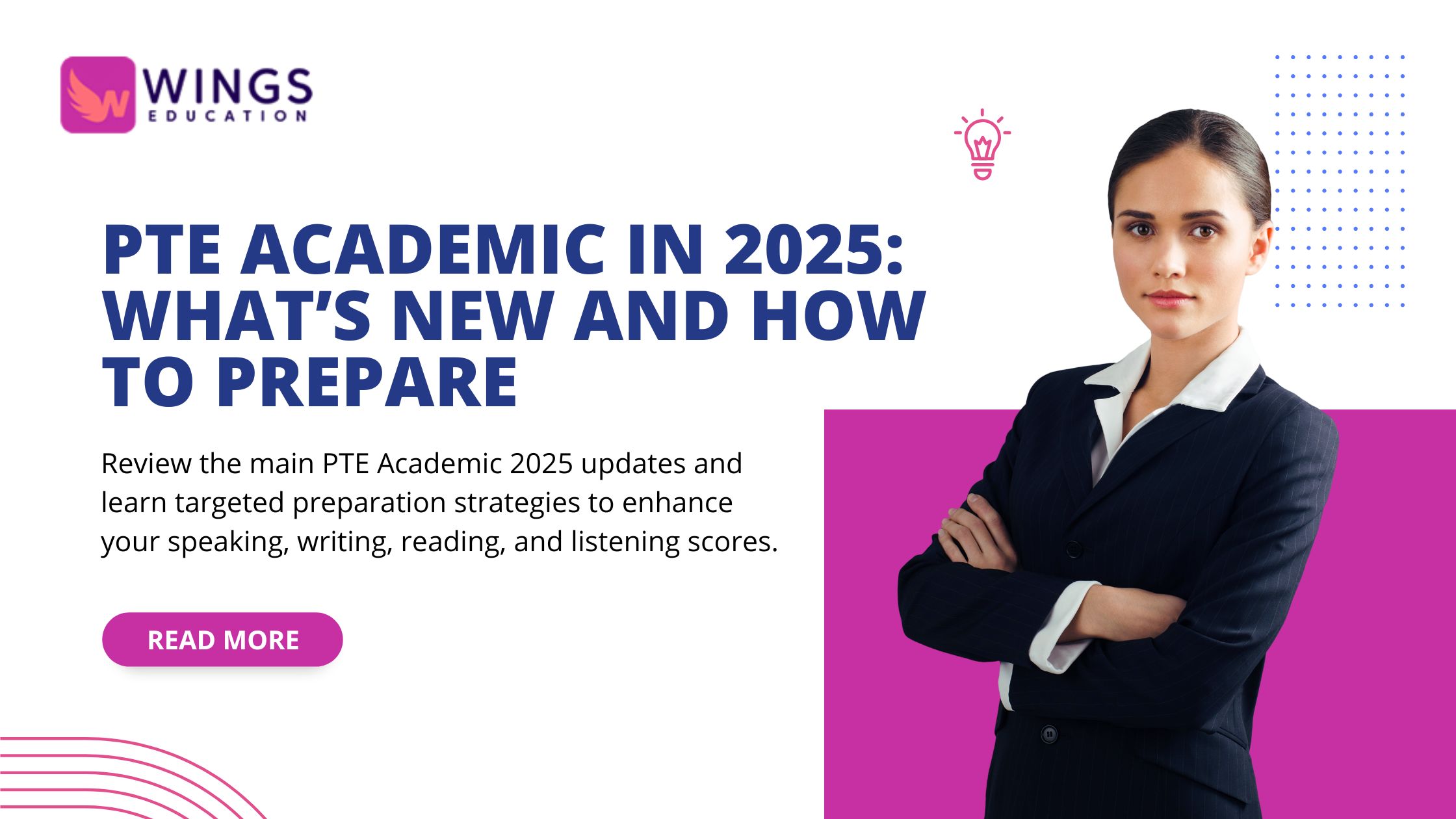
PTE Core Training: The Complete Guide to Mastering the New Exam
Master PTE Core Training with strategies for real-world English, time management, and test-specific skills to boost your immigration and work visa success.
If you’ve been keeping an eye on English language tests, you’ve probably noticed a new name popping up more often—PTE Core. Designed for immigration purposes, especially for Canada, PTE Core is already becoming a go-to option for many candidates. And with a new exam format comes a new challenge: how do you train for it effectively?
This guide dives deep into PTE Core Training—what it involves, how it’s different from other English tests, and how you can prepare for success without wasting precious time on skills you don’t actually need for this exam.
1. Understanding PTE Core: Not Just Another Test
Before we talk about training, let’s clear up what PTE Core actually is.
Think of it as the practical cousin of PTE Academic. While PTE Academic is designed for study purposes, PTE Core is tailored to assess everyday English skills needed for work and life in English-speaking countries. In other words, it’s less about academic vocabulary and more about real-world communication.
Some quick facts:
- Purpose: Primarily for immigration and work visas (especially Canada PR applications).
- Skills tested: Speaking, Listening, Reading, and Writing—just like other English proficiency tests, but with a more practical angle.
- Format: Fully computer-based, AI-scored, fast results.
The key takeaway? Your PTE Core Training should focus on communication you might actually use in daily life—emails, conversations, workplace discussions—rather than purely academic essays and research-style reading.
2. How PTE Core Differs from PTE Academic
It’s tempting to assume the two tests are the same with a different name, but that’s a trap many candidates fall into.
Here’s where PTE Core Training needs to be different:
- Vocabulary focus: Academic PTE requires a lot of formal and subject-specific words. PTE Core is about everyday vocabulary.
- Task design: You might be asked to write a short workplace message instead of a 300-word argumentative essay.
- Speaking style: It’s less about formal presentations and more about clear, spontaneous conversation.
- Listening content: You’ll hear audio clips that sound like everyday discussions, not university lectures.
If you train for PTE Academic and walk into a PTE Core exam, you might score well in some areas but miss the mark in others—because the test rewards different skills.
3. Why Tailored PTE Core Training Matters
You could, in theory, prepare with any generic English practice material. But without focusing on the test’s specific demands, you risk spreading your energy too thin.
Example:
If your training plan includes memorizing complex academic essay structures, that’s time you could instead spend mastering workplace email etiquette or improving your ability to summarize spoken information.
PTE Core rewards:
- Clarity and accuracy in communication
- Ability to respond quickly and naturally
- Understanding of everyday English accents and contexts
- Practical writing skills
A focused PTE Core Training program helps you:
- Target the right skills instead of wasting time.
- Understand the test’s scoring system so you can maximize points.
- Develop strategies for specific task types.
4. Breaking Down the PTE Core Sections
Training is always more effective when you break a big challenge into smaller parts. Let’s look at each section and how training should address it.
4.1 Speaking & Writing (Combined)
This section tests your ability to communicate clearly in spoken and written English.
Common tasks include:
- Read Aloud: Speaking clearly while reading text.
- Repeat Sentence: Listening to a sentence and repeating it exactly.
- Respond to a situation: Giving a short, practical answer to a scenario.
- Write Email or Short Message: Communicating information in 50–100 words.
Training focus:
- Speaking at a natural pace (not too fast, not too slow).
- Clear pronunciation and intonation.
- Writing concise, error-free messages.
- Expanding your vocabulary for workplace and daily life situations.
4.2 Reading
The reading section focuses on your ability to understand everyday written English.
Tasks might include:
- Fill in the blanks in a paragraph.
- Match information to headings.
- Answer multiple-choice questions based on short texts.
Training focus:
- Skimming for key ideas.
- Scanning for specific details quickly.
- Understanding synonyms and paraphrasing.
- Recognizing tone and purpose of the text.
4.3 Listening
Listening in PTE Core Training is all about understanding spoken English in different real-world contexts—workplace meetings, casual chats, service encounters.
Tasks may involve:
- Summarizing spoken text.
- Multiple-choice listening questions.
- Fill in missing words from an audio clip.
Training focus:
- Getting used to different accents (Canadian, Australian, British, American).
- Training your memory to hold short spoken details.
- Predicting content based on context clues.
5. Key Skills for Effective PTE Core Training
If you want your training to be efficient, focus on skills that have the biggest impact on your score.
5.1 Practical Vocabulary Development
Instead of memorizing academic terms like “photosynthesis” or “socioeconomic paradigm,” learn vocabulary for everyday use—work, travel, banking, health, and general life situations.
5.2 Time Management Under Pressure
PTE Core is timed tightly. Part of your training should be practicing how to:
- Answer without overthinking.
- Move on when stuck.
- Keep an eye on the timer while maintaining quality.
5.3 Active Listening
Passive listening (like watching TV without paying much attention) won’t cut it. Train actively: pause, repeat, and summarize what you hear.
5.4 Error Awareness
One of the most overlooked aspects of PTE Core Training is learning to spot your own mistakes—both in speaking and writing—so you can self-correct before submitting.
6. Training Strategies That Work
Here are approaches that can make your PTE Core preparation far more effective:
- Simulate the real test environment at least once a week.
- Record yourself speaking to check clarity and pronunciation.
- Alternate skill focus days—one day for speaking/writing, another for reading/listening.
- Review feedback from mock tests and fix recurring errors.
- Use authentic materials like news clips, workplace emails, and conversation transcripts for practice.
7. Common Mistakes to Avoid in PTE Core Training
Training can go wrong if you’re not careful. Watch out for these pitfalls:
- Over-practicing the wrong test format. PTE Core isn’t identical to PTE Academic or IELTS.
- Focusing only on one skill. The test is integrated—weakness in one section can affect another.
- Ignoring scoring criteria. You might be fluent, but if you ignore grammar, structure, or timing, your score will suffer.
- Relying solely on passive study. Just watching videos or reading notes won’t prepare you for the speed of the real test.
8. Mindset and Motivation
PTE Core Training is not just about language—it’s also about mindset.
Here’s how to keep yourself motivated:
- Set small milestones. Instead of aiming for a full score right away, target small improvements each week.
- Celebrate progress. Even a 1-point improvement means your training is working.
- Stay consistent. Daily practice, even for 30 minutes, is better than cramming once a week.
9. The Role of Technology in PTE Core Training
AI-powered tools, online mock tests, and speech analysis software can all help you fine-tune your skills. Just remember: technology is a supplement, not a substitute, for active, focused practice.
10. Final Thoughts
PTE Core Training is all about alignment—aligning your preparation with the exact skills the test measures. The more you tailor your approach to the test’s unique requirements, the better your chances of achieving your target score.
The bottom line:
- Train with purpose.
- Practice under real conditions.
- Focus on communication, not perfection.
Because at the end of the day, PTE Core is not testing if you can speak like a professor—it’s testing if you can communicate like a confident, competent professional in everyday life.























